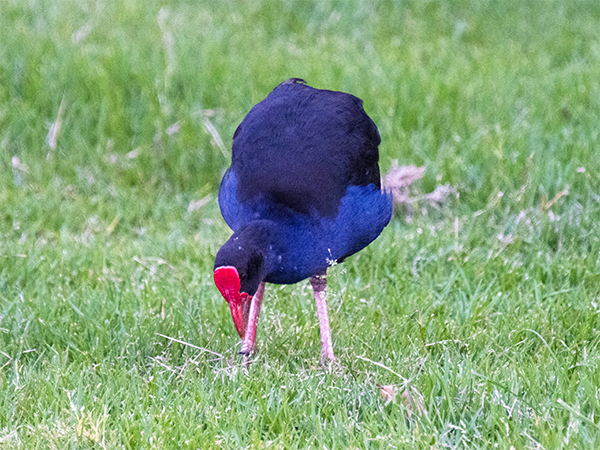
We also accept payments via Paypal
Huri Translations
Tel. +689 89 205 483
info@huri-translations.pf
PO BOX 365 Maharepa
98728 Mo'orea
French Polynesia
N°TAHITI 876649
Subscribe to our newsletter


Other stories depict trickery like a Kākā stealing brilliant red feathers from a red-crowned parakeet (Kākāriki). The Kākāriki had journeyed to Tinirau’s island (Te Motu Tapu a Tinirau – Mokoia), a sacred motu in mythology to acquire the elite colors. But an envious Kākā plucks the coveted raukura, the red feathers while grooming the Kākāriki, leaving the parakeet with his humbler green plumage. The account is reminiscent of the ʻUra (Kuhl’s lorikeet) stealing the feathers of the Moho (Spotless crake) in the lore of Rimatara island. The ʻUra waited until the Moho fell asleep to steal its green, yellow and red feathers altogether.
And stories like the Pūkeko (Australasian swamphen) tricking the Moho Pererū (Banded rail) into eating excrement derive humor from scatological accounts. Yet they also impart explanations for the rail’s opportunistic, scavenging diet versus the swamphen’s affinity for raiding crops. In a Niuean folktale, the Kulē (Australasian swamphen) angered the Veka (Banded rail) by claiming exclusive rights to feast on sugarcane, bananas, and taro. The Veka retaliated by trapping the Kulē’s legs in a Gēgē (Giant clam) shell, resulting in red and elongated legs.
As the researcher summarizes, these narratives emphasize imaginative worldmaking over moral lessons. The prevalence of avian characters and insights into ornithological details showcase an intimate ecological knowledge encoded in stories. And the personified birds as wily tricksters and proud rivals reveal Polynesian perspectives on feathered creatures as thinking, feeling persons – instead of being just a source of food. With scores of explanatory tales uncovered, Richter-Gravier’s study provides a window into traditional Polynesian ethno-ornithology and worldviews with birds at the forefront.

Birds occupied a special place in traditional Polynesian societies. A new study by Raphael Richter-Gravier analyzed 300 oral narratives to uncover how Polynesians made sense of avian ecology and behavior through imaginative stories. Focusing on tales of inter-species relationships, Manu Duality: Separation, Competition and Deception in Polynesian Bird Stories highlights birds as characters able to think and feel like humans.
Polynesian perspectives on feathered creatures as thinking, feeling persons
The masterpiece examines animal behaviors like a rivalry between the Toroa (Southern royal albatross) and Kākāpō in Aotearoa. In a game of hide-and-seek, the camouflaged green Kākāpō repeatedly evades detection by the strikingly plumaged albatross. This imaginative scene provides an origin story for the albatross’ life at sea, bested by the forest-dwelling Kākāpō.
Birds of a Feather: Birdie Stories Reveal Polynesian Perspectives
